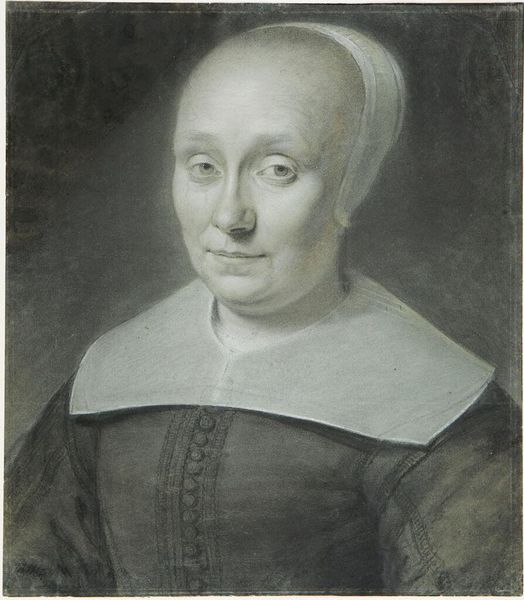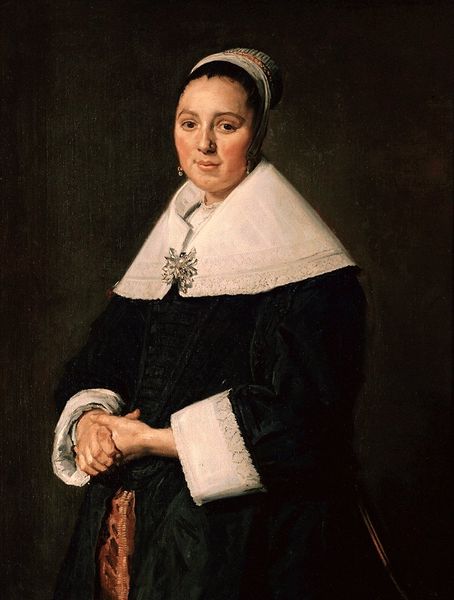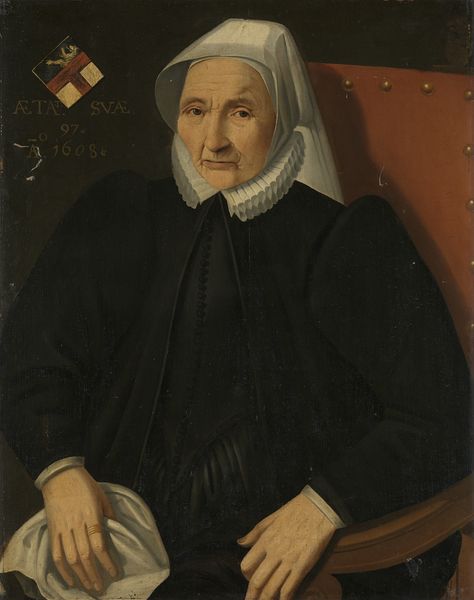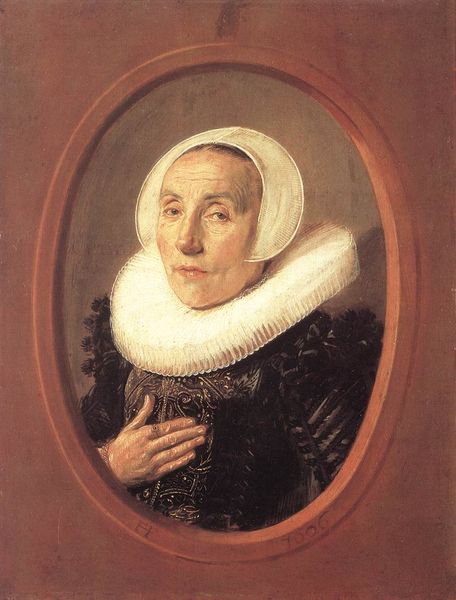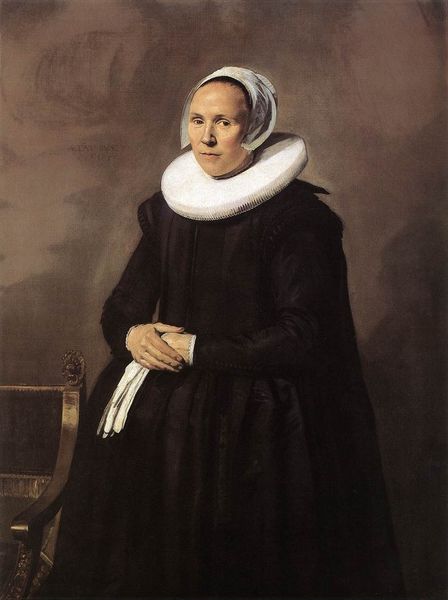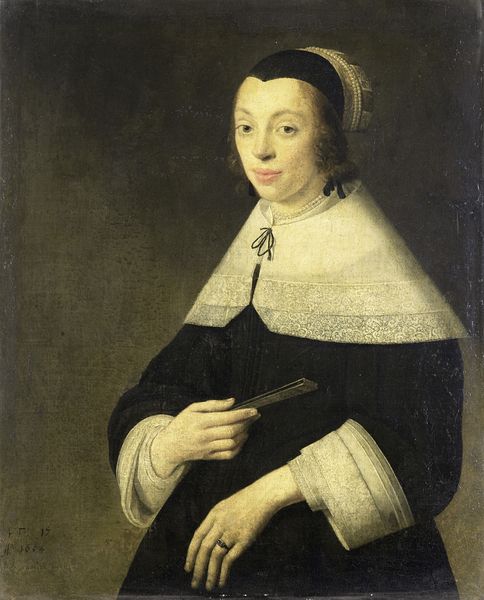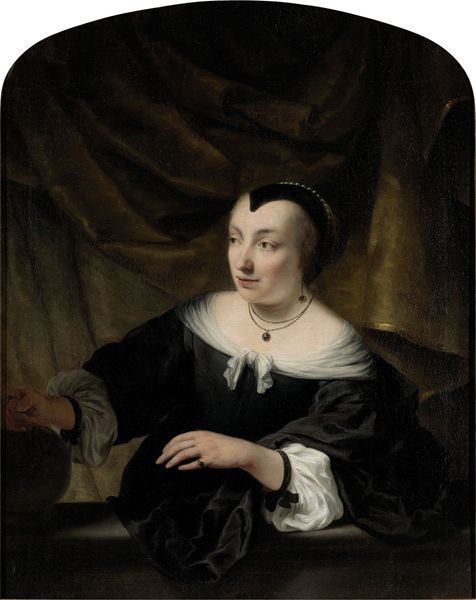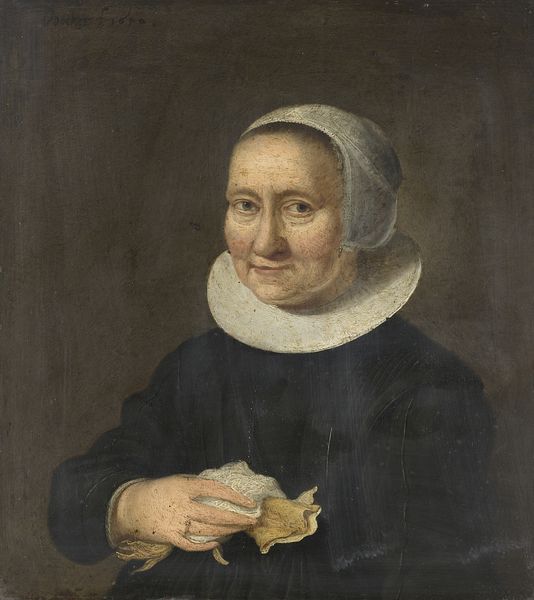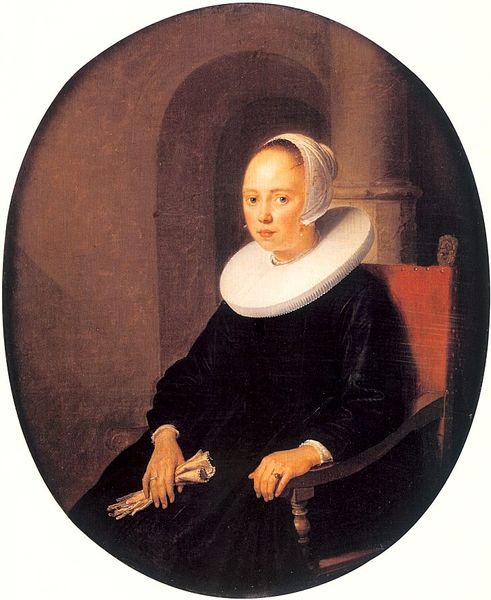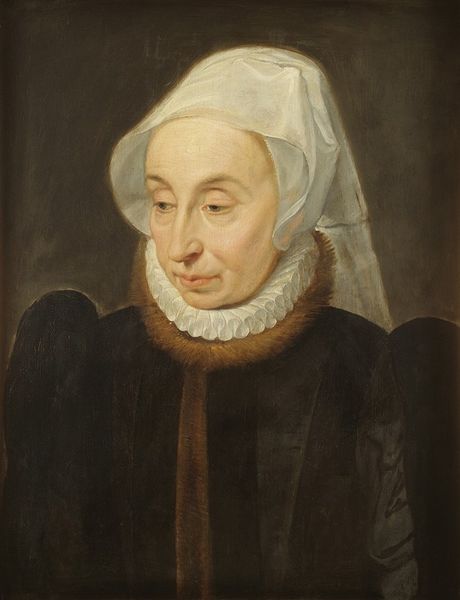
oil-paint
#
portrait
#
dutch-golden-age
#
oil-paint
#
genre-painting
Dimensions: height 44.5 cm, width 34 cm, depth 6 cm
Copyright: Rijks Museum: Open Domain
Editor: This is a portrait of Aeltje Denijs, painted sometime between 1654 and 1700 by Nicolaes Maes, rendered in oil. There's a sense of quiet dignity about her. I’m curious about its place in Dutch Golden Age portraiture – how do you interpret this work within that context? Curator: This portrait participates in the democratization of art during the Dutch Golden Age. We see a movement away from exclusively depicting nobility or religious figures toward the rising merchant class. Portraits like this solidified social status, reflecting the sitter's affluence and respectability. Aeltje Denijs’ stern yet kind expression tells a story of Dutch prosperity, but the almost photorealistic treatment makes the person disappear behind the presentation of status and puritan morals. What does the use of dark colour convey to you? Editor: It makes her attire blend into the background, highlighting her face, the white collar, and bonnet – essentially, her identity is proclaimed in the presentation of purity, doesn’t it? Were there similar conventions with clothing and portraiture in the display of civic virtue at the time? Curator: Precisely! These understated garments were typically associated with devout Protestant women. Clothing, pose, even facial expression, worked in concert to broadcast the sitter's social standing and moral rectitude within a very specific, religiously-informed, societal framework. Editor: So it's less about individual personality and more about a public declaration of belonging to a certain social and moral order. Curator: Exactly. While skilled in technique and demonstrating artistic capabilities of Maes, one wonders how it participates to the shaping of an image or concept, rather than simply representing reality. What the image really tries to sell as much as Dutch puritan moral as of the Golden Age. Editor: I never really considered how much portraits can reveal about the values and social structures of a specific time! It highlights the role of painting and imagery within society. Curator: Indeed! The true art resides in critically reflecting on how Dutch Golden Age imagery portrays this identity within specific power dynamics, then and today.
Comments
No comments
Be the first to comment and join the conversation on the ultimate creative platform.

